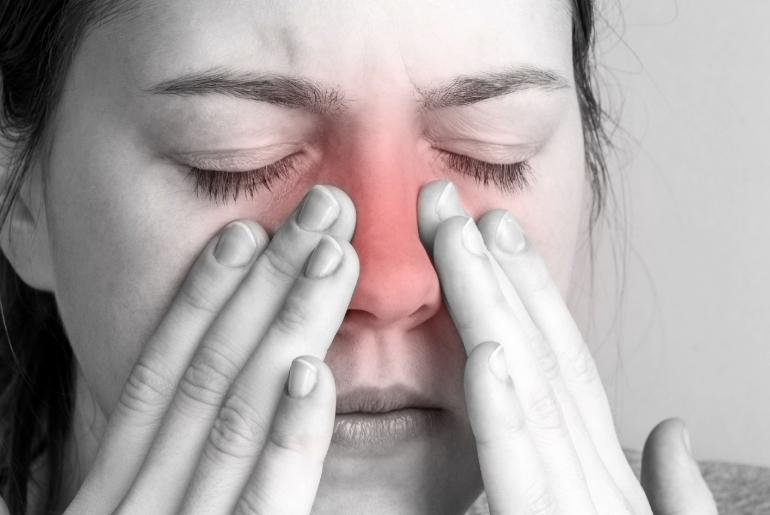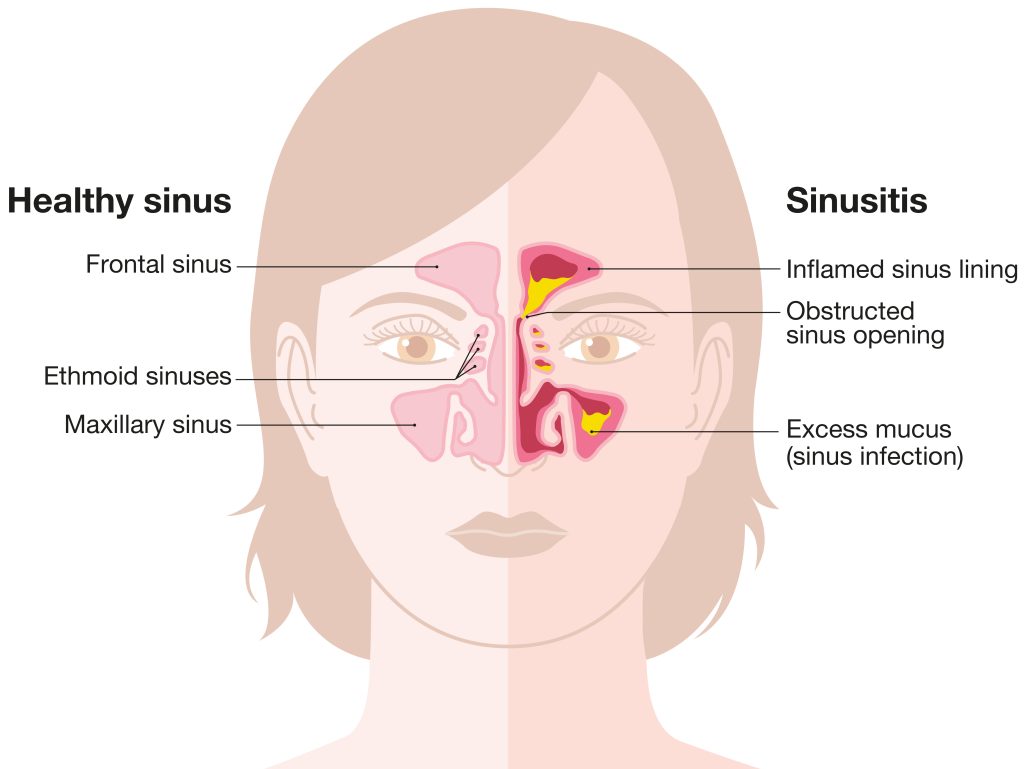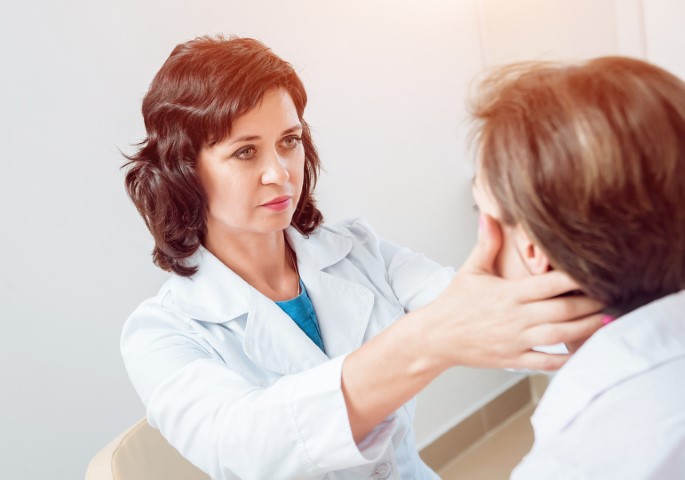Introduction
Sinusitis is common, treatable and preventable, provided its causes and symptoms are not taken lightly but addressed promptly and on time. As per the National Institute of Allergy and Infectious Diseases (NIAID), sinusitis affects Indians significantly. Nearly 134 million suffer from this condition, and one out of eight Indians is infected by chronic sinusitis. The condition has more prevalence than asthma, diabetes, and coronary artery disease among Indians. The condition demands proper treatment or could aggravate severe complications that could be dangerous to the patient’s health.
This blog discusses sinusitis, a common condition that must not be overlooked, as the various potential complications it carries if left untreated could be severe and life-threatening.
Sinuses and Sinusitis
Sinuses are cavities in the nasal passage with mucus lining that helps keep the passage moist and lubricated. Healthy sinuses are air-filled without any bacterial or pathogen presence. Sinuses are behind the cheeks, forehead, eyes, and nasal bones. They act as air filters and humidifiers, help enhance voice resonance, and reduce the head’s weight.
Sinusitis is a condition of inflamed sinuses. When the air in the sinuses gets infected with bacteria, viruses, or pathogens, they get inflamed and blocked with mucus, causing difficulty in breathing. It has symptoms similar to the common cold and is often confused with the latter. Though the condition is non-communicable, the infection-causing bacteria or viruses may pass from person to person.
Sinusitis symptoms – The condition causes headaches, facial pain and pressure, stuffy nose, sneezing, eye and nose itchiness, and breathing difficulties. Some other sinusitis symptoms are bad breath, loss of smell and taste, running nose, fever, cough, sore throat, and fatigue.
Causes of sinusitis- Sinusitis could affect anyone at any time. However, people with allergies, bronchitis, asthma, weakened immune systems, nasal polyps or nasal deformity, smokers, and second-hand smokers are more prone to developing sinusitis.
Types of sinuses- The four major types of sinuses are-
- Maxillary sinuses – on each side of the nose, next to the cheekbones (the maxillae), and below the eyes.
- Frontal sinuses – close to the forehead and above the eyes.
- Ethmoid sinuses – close to the eyes on each side of the nasal bridge.
- Sphenoid sinuses – deeper within your skull, behind the eyes.
Need for Sinusitis Treatment
Sinusitis is a common condition affecting your sinuses with inflammation. Still, it requires adequate and appropriate treatment to prevent its aggravation. It is not just an allergic condition.
It is more than an occasionally irritating condition requiring just a few doses of medication and rest.
The treatment for the condition starts with self-care, medications, and alternative treatment modalities. If these do not help treat the condition, medical procedures drain the fluid from the nasal passage.
If treated appropriately, one can be relieved of sinusitis symptoms for good, but if not, the condition can worsen and may cause severe health issues.
Potential Sinusitis Complications from Untreated or Poorly Treated Sinusitis
One must watch for the potential sinusitis complications that may arise in the long term if the condition is left untreated or improperly treated. These complications can adversely affect the overall health of an individual.
The various complications associated with chronic sinusitis are-
- Loss of smell and taste- The loss of smell renders an individual unable to enjoy food and other finer things in fine, be it food, natural fragrance of flora, or scents. The loss of smell could be partial, called hyposmia, or complete, known as anosmia. The loss of taste makes food taste bland, causing patients to add more salt and other spices that might lead to problems like high blood pressure and gastrointestinal or kidney issues in the long run. Patients often lose interest in eating food, leading to weight loss, nutritional deficiency, depression, and other health problems.
- Infection to other body parts- Though sinusitis is not contagious, the bacteria and viruses that cause the condition can, if not treated, spread to other parts of the body like the eyes, ears, skin, or the brain. The spread of the infection may damage the functionality of the affected part.
- Mucocele- Known as paranasal sinus mucocele, it is a cyst that gets formed when the sinuses cannot drain the mucus. The hardened mass of cysts may grow in size and exert pressure on the nose and sinuses, leading to difficulty in breathing. Infection in this mucocele may need an operation for its removal.
- Meningitis- Meningitis is the inflammation or infection of the membrane or fluid surrounding the brain or spinal cord. The membrane is a protective layer of the brain and spinal cord. Untreated sinusitis could spread infection in the fluid or membrane surrounding the brain, bones, or spinal cord, leading to meningitis, a severe and life-threatening condition.
- Sinus thrombosis- Cavernous sinus thrombosis is the formation of a blood clot in the cavernous sinuses. Cavernous sinuses are cavities under the brain and behind the eye sockets. The blood clot may develop due to infection in the face or skull. Blood clots prevent the spread of infection, but when the clot is in cavernous sinuses, it restricts the blood flow from the brain, creating pressure and damaging the brain, eyes, and other nerves. It could turn fatal without immediate treatment.
- Orbital cellulitis- Infection of the soft tissue of the eye socket behind the orbital septum is known as orbital cellulitis. The orbital septum is a thin tissue that separates the eyelid and the eye socket. Sinusitis can spread infection in the eyes, causing eye irritation, swelling, puffiness, redness, and even vision loss in the long run without adequate treatment.
Conclusion
It is unwise to consider sinusitis a common and less harmful condition and ignore its treatment. Untreated conditions can be potentially dangerous, with severe complications that may adversely affect the individual’s health beyond repair. The potential risk to overall health could be chronic and life-threatening. Ensure your sinus health through hygiene, adequate hydration, and avoiding exposure to sinus irritants. Consult your doctor immediately if you have sinusitis symptoms and get the treatment without any delay.
References
https://www.mdpi.com/2673351X/5/1/2#:~:text=An%20estimated%20134%20million%20Indians,congestion%20and%20obstruction%20%5B1%5D
https://www.merillife.com/blog/medtech/sinus-causes-symptoms





